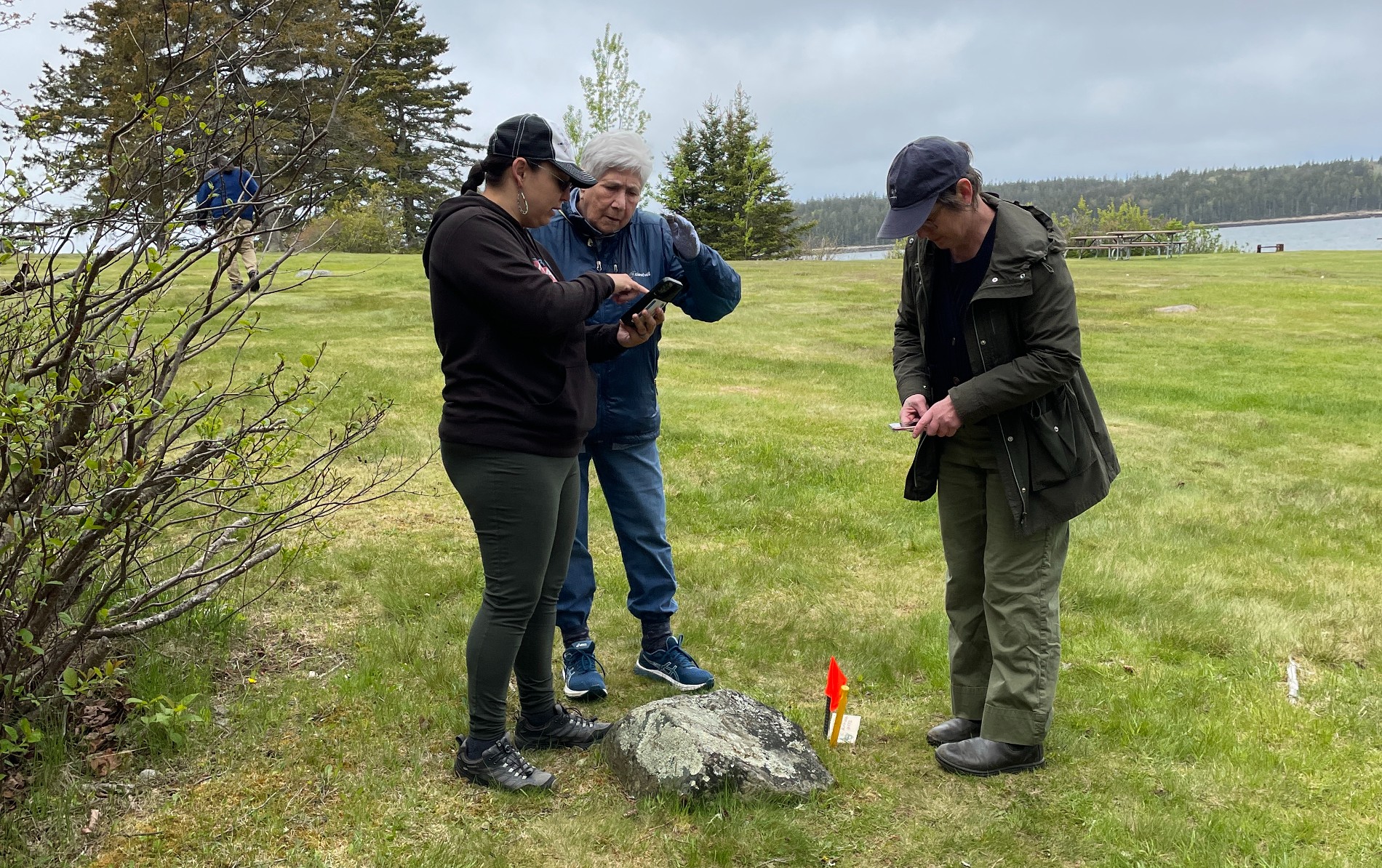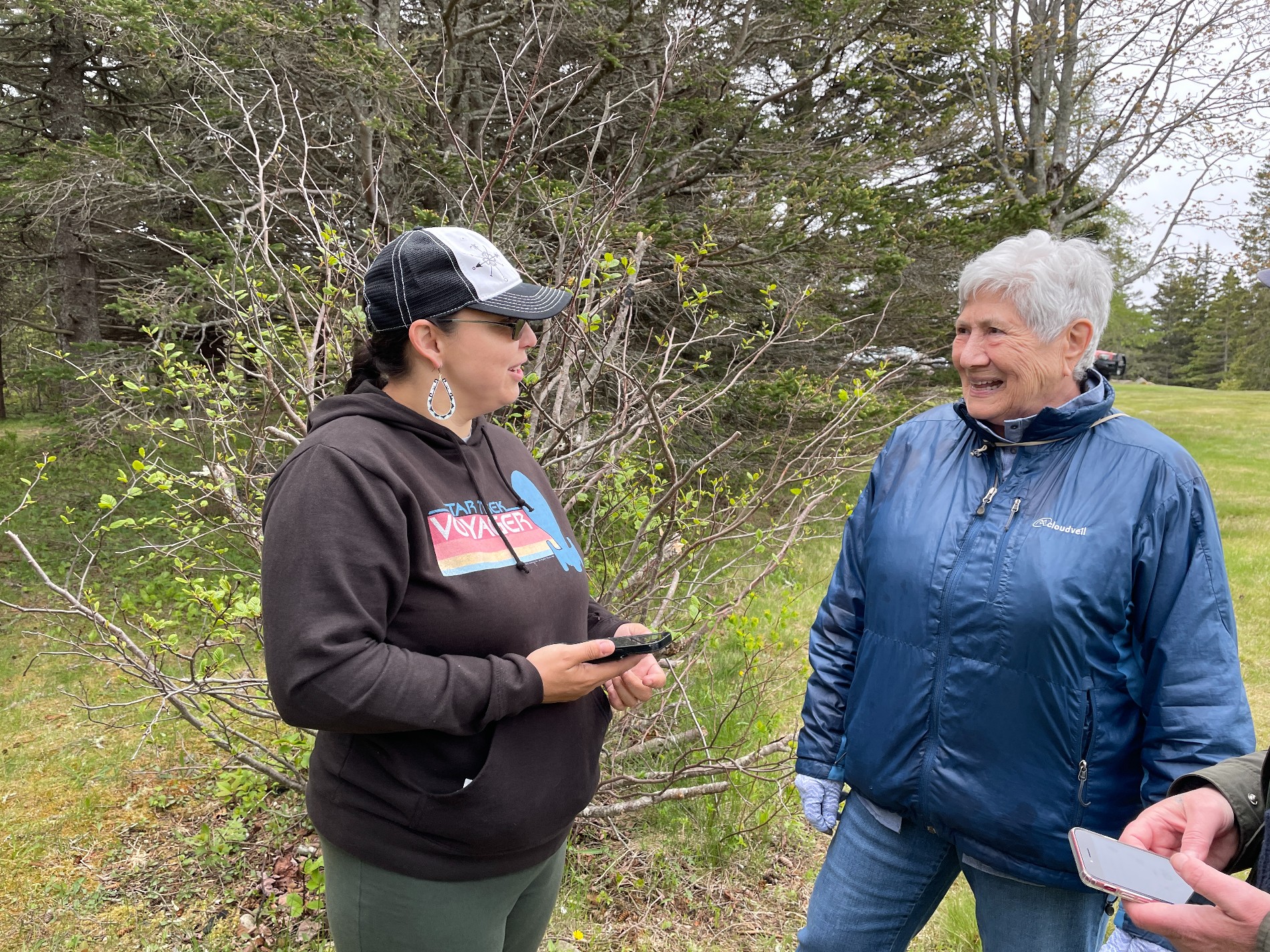Confronting Climate Change With Indigenous Knowledge
July 25th, 2024
July 25th, 2024
BY REBECCA COLE-WILL
Acadia National Park is addressing climate change threats to archaeological resources in collaboration with the Wabanaki Tribes, whose cultural heritage these important landscapes represent.
All along the coast, fragile archaeological sites are being destroyed by climate change impacts from steadily rising sea levels and increasingly intense and frequent storm events. The now-infamous storms of January of this year are only the most recent of ongoing events that demonstrate the challenges that need to be addressed.
Acadia recently received funding from the Inflation Reduction Act (IRA). This federal fund source allotted $20 million to the National Park Service (NPS) Cultural Resources Stewardship and Science (CRSS) program for climate change response. Acadia’s project was one of 14 in the NPS nationally.
Acadia was recognized for a unique approach to integrate Indigenous archeology practice into co-stewardship of vulnerable archaeological sites.
There are at least 24 ancestral Wabanaki archaeological sites in Acadia. A few have been studied by academic archaeologists with a perspective on the past formed by Western science archaeological theory.

Passamaquoddy archeologist Natalie Dana Lolar, Passamaquoddy language expert Madonna Soctomah, and UM graduate student Catherine Matassa use a mapping app to monitor archeological site erosion. (NPS photo)
This new project is a deep collaboration with the Wabanaki Nations (Houlton Band of Maliseet, Mi’kmaq Nation, Passamaquoddy Tribe, and Penobscot Nation) led by Dr. Bonnie Newsom, Associate Professor of Anthropology and Climate Change at the University of Maine.
Since the mid-2000s, Dr. Newsom has partnered to expand consultation and documentation of Wabanaki heritage sites in Acadia (read more about Dr. Newsom’s work).
Dr. Newsom’s work centers Wabanaki perspectives on these traditional cultural landscapes to enrich our understanding of their value and historical context.
Wabanaki Tribal historic preservation officers (THPOs), fluent speakers, elders, and youth will participate in a five-year project to braid Western science information with Indigenous knowledge. This approach is sometimes called “Two-Eyed Seeing.”
The funding will support collaboration to bring Wabanaki people back to the park for place-based experience of heritage landscapes, build communication products that are informed by Wabanaki knowledge, language, and interests, and cocreate a research agenda that integrates archaeological science with Indigenous knowledge. Dr. Newsom is mentoring new graduate students who will work on aspects of this project, such as technical analyses of cultural materials from these sites that inform Wabanaki interests in the past.

Natalie Dana Lolar and Madonna Soctomah integrate Passamaquoddy language into archeological terminology.
(NPS photo)
Outcomes will include new educational and interpretive material about archaeological sites as cultural heritage resources, a framework for other NPS sites to expand co-stewardship consultations with affiliated Tribes, and a model for decision-making for managing archaeological sites rapidly being lost to climate change effects.
REBECCA COLE-WILL is the Chief of Resource Management for Acadia National Park.